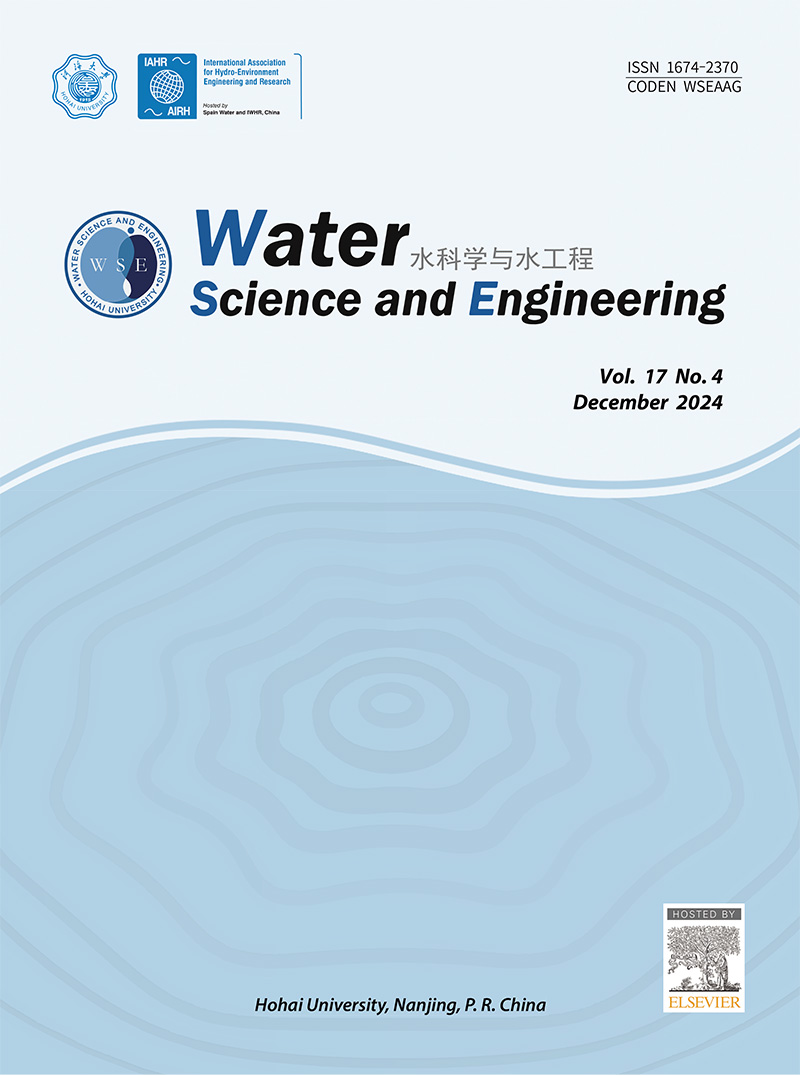Core-periphery structure for district metered area partitioning in urban water distribution systems
IF 4.3
Q1 WATER RESOURCES
引用次数: 0
Abstract
As urban areas expand and water demand intensifies, the need for efficient and reliable water distribution systems becomes increasingly critical. A widely used infrastructure management approach involves partitioning water distribution networks (WDNs) into district metered areas (DMAs). However, suboptimal designs of DMA partitioning can lead to inefficiencies and increased costs. This study presents a core-periphery-informed approach for DMA design that explicitly utilises the natural division between a densely connected core and a sparsely connected periphery. Incorporating this structural framework enhances network resilience, improves water pressure stability, and optimises boundary device placement. The proposed core-periphery-informed DMA design integrates hydraulic and topological analyses to identify central and peripheral network areas, applies a community structure detection algorithm conditioned by these areas, and uses an optimisation model to determine the optimal placement of boundary devices, enhancing network resilience and reducing costs. When applied to the Modena WDN in Italy, this approach demonstrates improved pressure stability and significant cost reductions compared to traditional methods. Overall, the findings highlight the practical benefits of the core-periphery-based DMA design, offering a scalable and data-driven solution for urban water distribution systems.
城市配水系统中区域计面积划分的核心-外围结构
随着城市地区的扩大和水需求的增加,对高效和可靠的供水系统的需求变得越来越重要。一种广泛使用的基础设施管理方法是将配水网络(wdn)划分为区域计量区域(dma)。然而,DMA分区的次优设计可能导致效率低下和成本增加。本研究提出了一种DMA设计的核心-外围知情方法,明确地利用了密集连接的核心和稀疏连接的外围之间的自然划分。结合这种结构框架可以增强网络弹性,提高水压稳定性,并优化边界设备的放置。提议的核心-外围通知DMA设计集成了水力和拓扑分析,以确定中心和外围网络区域,应用由这些区域限定的社区结构检测算法,并使用优化模型确定边界设备的最佳位置,增强网络弹性并降低成本。当应用于意大利Modena WDN时,与传统方法相比,该方法提高了压力稳定性,显著降低了成本。总体而言,研究结果强调了基于核心外设的DMA设计的实际好处,为城市供水系统提供了可扩展和数据驱动的解决方案。
本文章由计算机程序翻译,如有差异,请以英文原文为准。
求助全文
约1分钟内获得全文
求助全文
来源期刊

Water science and engineering
WATER RESOURCES-
CiteScore
6.60
自引率
5.00%
发文量
573
审稿时长
50 weeks
期刊介绍:
Water Science and Engineering journal is an international, peer-reviewed research publication covering new concepts, theories, methods, and techniques related to water issues. The journal aims to publish research that helps advance the theoretical and practical understanding of water resources, aquatic environment, aquatic ecology, and water engineering, with emphases placed on the innovation and applicability of science and technology in large-scale hydropower project construction, large river and lake regulation, inter-basin water transfer, hydroelectric energy development, ecological restoration, the development of new materials, and sustainable utilization of water resources.
 求助内容:
求助内容: 应助结果提醒方式:
应助结果提醒方式:


